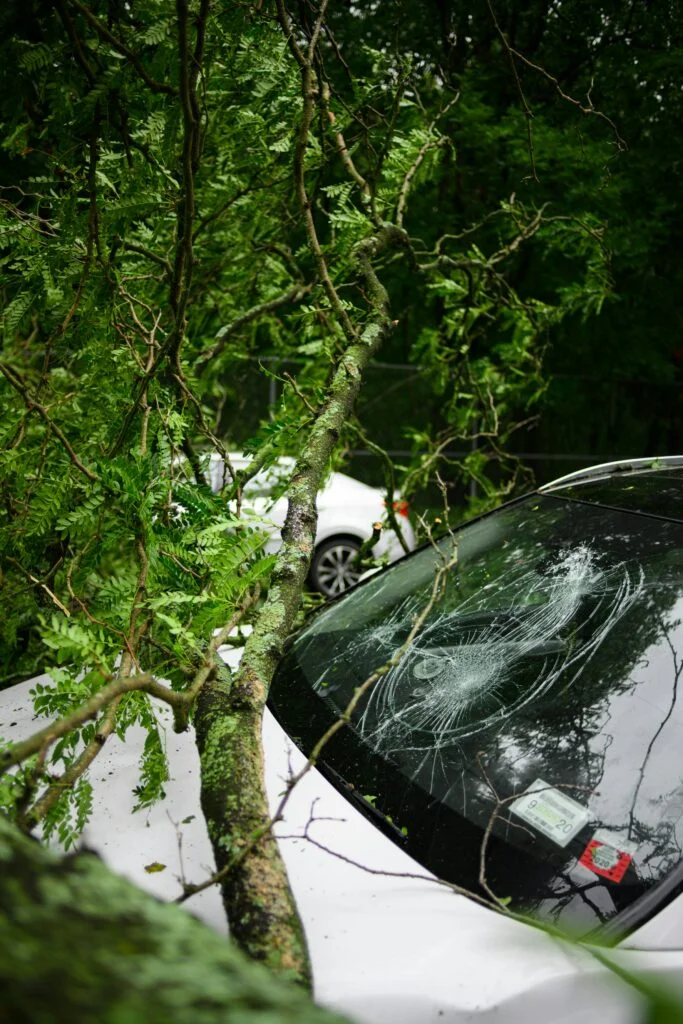Storms can wreak havoc on our environment, leaving behind a trail of destruction that often includes uprooted trees, broken branches, and damaged canopies. However, amidst the chaos, there is a remarkable display of resilience as trees begin the process of responding to and recovering from the damage inflicted by these natural forces. In this article, we’ll delve into the fascinating ways in which trees respond to storm damage and the strategies they employ to recover and thrive once again.

Understanding Tree Response to Storm Damage
When a storm strikes, trees face a barrage of challenges ranging from strong winds and heavy rain to lightning strikes and even hail. In response to these stressors, trees have evolved a variety of mechanisms to minimize damage and increase their chances of survival.
One of the primary ways trees respond to storm damage is through physical adaptations. For example, flexible trunks and branches can bend and sway in the wind, reducing the risk of breakage. Additionally, some trees have developed specialized root systems that anchor them firmly in the soil, providing stability during storms and preventing uprooting.
Furthermore, trees possess innate biological responses to stress. When subjected to damage, they produce hormones and chemicals that trigger protective mechanisms, such as the formation of callus tissue to seal wounds and prevent infection. This process, known as compartmentalization, helps trees contain damage and promote healing.
Recovery Strategies Employed by Trees
After enduring the trauma of a storm, trees embark on a journey of recovery that may span months or even years. Despite the initial devastation, trees possess remarkable resilience and employ a variety of strategies to bounce back stronger than before.
One crucial aspect of tree recovery is resource allocation. In the aftermath of a storm, trees prioritize the allocation of resources such as water, nutrients, and energy towards essential functions like root regeneration and new growth. By redirecting resources to areas in need, trees can accelerate the healing process and rebuild damaged structures.
Additionally, trees may exhibit resilience through vegetative regeneration. Many tree species have the ability to produce new shoots from dormant buds or epicormic growth points, allowing them to compensate for lost foliage and branches. This phenomenon, known as coppicing or epicormic sprouting, enables trees to replenish their canopies and resume photosynthesis, essential for their long-term survival.
Furthermore, symbiotic relationships with fungi and bacteria play a crucial role in tree recovery. Mycorrhizal fungi, for example, form mutually beneficial associations with tree roots, facilitating nutrient uptake and enhancing resilience to environmental stressors. By harnessing the power of these microbial allies, trees can expedite the process of nutrient acquisition and promote overall health and vitality.
The Importance of Post-Storm Care
While trees possess innate mechanisms for responding to and recovering from storm damage, they often benefit from human intervention and care during the recovery process. Arborists and tree care professionals play a vital role in assessing the extent of damage, implementing corrective measures, and providing ongoing maintenance to support tree health and resilience.
One key aspect of post-storm care is pruning and structural support. Removing damaged or compromised branches helps trees allocate resources more efficiently and reduces the risk of secondary infections or further damage. Additionally, installing support systems such as braces or cables can stabilize weakened trees and prevent future failures during storms.
Moreover, proper irrigation and soil management are essential for promoting tree recovery. Ensuring adequate moisture levels and addressing soil compaction issues can enhance root growth and facilitate nutrient uptake, facilitating faster recovery and promoting overall tree health.
Community Engagement and Resilience
In the aftermath of a severe storm, communities often come together to support one another and aid in the recovery efforts. Engaging in tree recovery initiatives, such as volunteer tree planting programs or community clean-up events, not only helps restore the urban forest but also fosters a sense of community resilience and environmental stewardship.
Furthermore, proactive measures such as tree risk assessments and emergency preparedness plans can help mitigate the impact of future storms and enhance community resilience. By investing in the health and resilience of urban trees, communities can reduce the severity of storm damage and minimize the associated economic and environmental costs.
Storms pose significant challenges to trees, but they also serve as a testament to nature’s resilience and adaptability. By understanding how trees respond to and recover from storm damage, we can appreciate the intricate mechanisms that enable them to withstand adversity and thrive in the face of adversity. Through thoughtful management and community engagement, we can support the recovery of our urban forests and build more resilient communities for generations to come.